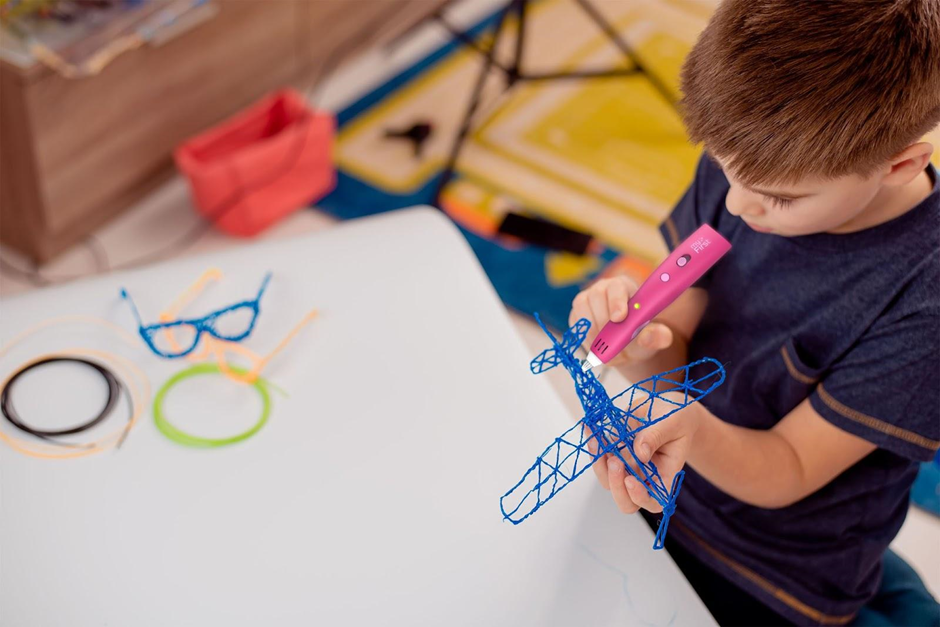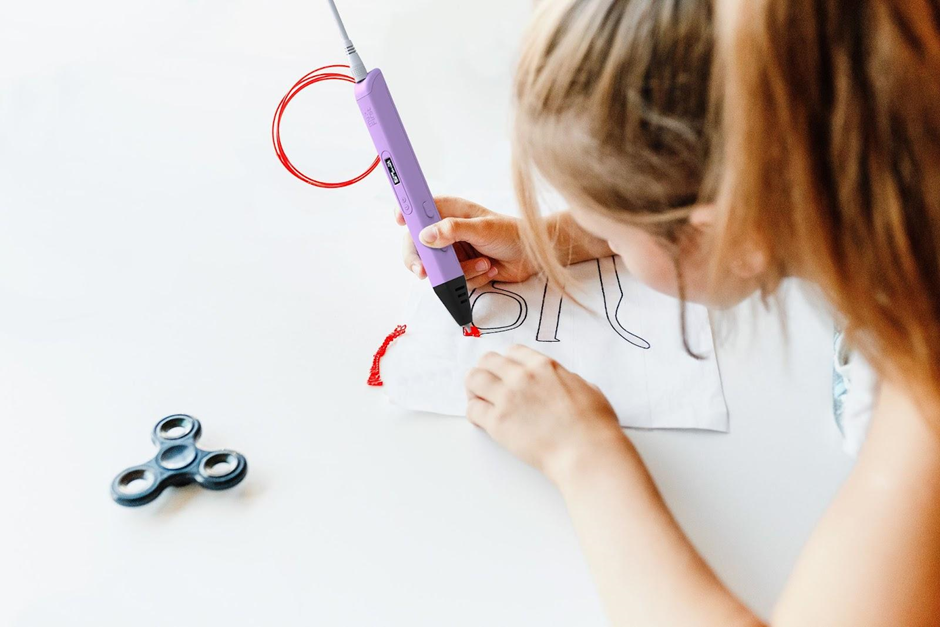In today’s world, where screens dominate children’s lives, parents are constantly on the lookout for creative, screen-free activities that engage their kids while fostering learning and development. Enter the 3D pen for kids – a revolutionary tool that combines fun, education, and creativity in one compact device. With a 3D pen, children can bring their imaginations to life by drawing in three dimensions, creating everything from miniature models to custom accessories.
But with so many options available, how do you choose the best 3D pen for your child? This guide will walk you through everything you need to know about selecting the right 3D pen for kids, ensuring a safe, fun, and educational experience for your little creator.
Why a 3D Pen for Kids Is a Must-Have Tool
A 3D pen for kids is more than just a toy – it’s a tool that opens up a world of possibilities for creativity, learning, and skill development. Unlike traditional drawing tools, which are limited to two dimensions, a 3D pen allows children to create objects that they can hold, display, and even use. This hands-on activity not only sparks their imagination but also helps them develop important skills like problem-solving, spatial awareness, and fine motor coordination.
Here are some of the key benefits of using a 3D pen for kids:
- Encourages Creativity and Imagination: A 3D pen allows children to think outside the box and create unique designs that reflect their ideas and interests.
- Promotes Focus and Patience: Crafting with a 3D pen requires concentration and careful planning, helping kids develop focus and mindfulness.
- Develops Motor Skills and Spatial Awareness: As kids maneuver the pen to create 3D shapes, they improve their hand-eye coordination and gain a better understanding of spatial relationships.
- Screen-Free Fun: With concerns about excessive screen time on the rise, a 3D pen offers a refreshing alternative that keeps kids engaged without relying on digital devices.
- Boosts Problem-Solving Abilities: Creating 3D designs often involves trial and error, teaching kids resilience and adaptability as they refine their techniques.
Whether your child is interested in art, science, or engineering, a 3D pen provides a versatile platform for exploration and learning.

What to Look for in a 3D Pen for Kids
When shopping for a 3D pen for kids, it’s important to prioritize safety, ease of use, and durability. Here are the key factors to consider:
1. Child-Safe Design
Safety is the most important consideration when choosing a 3D pen for kids. Look for pens with low-temperature settings and thermal control systems that prevent burns. Many child-friendly models are designed to keep the heating elements enclosed, ensuring that little fingers stay safe during use.
2. Non-Toxic Filament
The filament used in 3D pens is just as important as the pen itself. Opt for pens that use BPA-free, eco-friendly filament. This ensures that the materials are safe for children to handle and reduces the environmental impact of your child’s creations.
3. Ergonomic Design
A lightweight, easy-to-hold pen is essential for small hands. Ergonomic designs not only make the pen more comfortable to use but also reduce strain, allowing kids to enjoy longer creative sessions without discomfort.
4. Ease of Use
For younger children or beginners, simplicity is key. Look for pens with straightforward controls, such as one-button operation or pre-set modes. Pens with quick setup processes and minimal maintenance requirements are ideal for kids who are just starting out.
5. Durability
Kids can be rough with their tools, so it’s important to choose a pen that’s built to last. High-quality materials and sturdy construction ensure that the pen can withstand daily use and occasional drops.
6. Versatility
Some 3D pens come with additional features, such as adjustable speed and temperature settings, which allow for more advanced techniques. If your child is older or has experience with 3D pens, these features can enhance their creative possibilities.
Top 3D Pen Recommendations for Kids
While there are many options on the market, some brands stand out for their child-friendly features and reliability. One such brand is myFirst, which offers a range of 3D pens specifically designed for kids. Here are two standout models:
- 3dPen Make: This introductory model is perfect for younger children. It features an ergonomic design, a safe heating system, and simple controls, making it easy for kids to get started with 3D drawing.
- 3dPen Artist: Designed for older children or those with more experience, this model offers advanced features that allow for intricate designs and more complex projects.
Both models use BPA-free, recyclable filament, ensuring a safe and eco-friendly experience for kids and parents alike.
How to Use a 3D Pen with Kids: Tips for Success
To ensure a positive experience with a 3D pen for kids, follow these tips:
1. Start with Simple Projects
Begin with easy designs to help your child get comfortable with the pen. For example, they can start by creating basic shapes like cubes or pyramids before moving on to more complex projects.
2. Supervise Younger Children
While most 3D pens for kids are designed with safety in mind, it’s always a good idea to supervise younger children during use. This ensures that they use the pen correctly and safely.
3. Provide Inspiration
Offer your child a variety of project ideas to spark their creativity. From animals and buildings to custom accessories, the possibilities are endless. You can also find templates and tutorials online to guide their creations.
4. Encourage Experimentation
Let your child experiment with different techniques, colors, and designs. Trial and error is an important part of the learning process, and it helps kids develop problem-solving skills and resilience.
5. Incorporate Learning
Use the 3D pen as a tool for education. For example, your child can create models of geometric shapes, plant structures, or historical artifacts to enhance their understanding of math, science, and history.

Creative Ideas for Kids to Try with a 3D Pen
A 3D pen for kids opens up a world of possibilities for creative expression. Here are some fun and educational projects your child can try:
- Animals and Creatures: Create small models of animals, insects, or even mythical creatures. Kids can experiment with colors and textures to make their creations unique.
- Miniature Buildings and Structures: Build miniature models of houses, castles, or bridges. This activity is perfect for children interested in architecture or engineering.
- Custom Accessories: Design personalized keychains, jewelry, or mini sculptures that can be used as gifts or decorations.
- Learning Aids: Create 3D models of geometric shapes, plant structures, or historical artifacts to make learning more interactive and hands-on.
- Artwork and Crafts: Use the 3D pen to create decorative ornaments, abstract sculptures, or even 3D greeting cards.
These activities not only provide hours of fun but also help children develop important skills like creativity, focus, and problem-solving.
The Takeaway: Choosing the Right 3D Pen for Kids
A 3D pen for kids is a fantastic tool for fostering creativity, focus, and hands-on learning. By choosing a pen that’s safe, easy to use, and durable, you can give your child a fun and educational experience that supports their development. Whether they’re crafting, experimenting, or exploring STEM concepts, a 3D pen opens up a world of possibilities for young creators.
Investing in the right 3D pen ensures that your child can enjoy hours of screen-free fun while developing valuable skills. So, take the time to research your options and choose a pen that meets your child’s needs – it’s a decision that will inspire creativity and learning for years to come.

